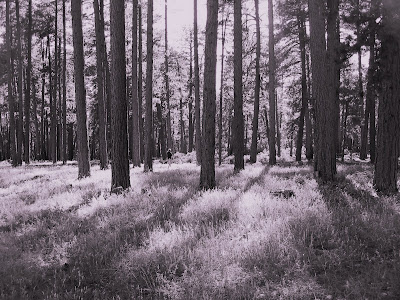Trail Maintenance Leadership, Monadnock Conservancy & Eastern Mountain Sports, Peterborough, NH
Hiking Trail, Spectacle Pond, Roxbury, NH
 An old hemlock along the trail at Spectacle Pond. The scar was caused by a fire decades ago, which may have escaped from a burning field. Well-designed trails 'connect the dots', or move the user from one interesting feature to the next, whether it's a large tree, a view, a mossy log, or any other feature that stands out. Not only does this make the trail more visually enticing, but also serves as an educational tool.
An old hemlock along the trail at Spectacle Pond. The scar was caused by a fire decades ago, which may have escaped from a burning field. Well-designed trails 'connect the dots', or move the user from one interesting feature to the next, whether it's a large tree, a view, a mossy log, or any other feature that stands out. Not only does this make the trail more visually enticing, but also serves as an educational tool.Forest Ecosystem Management Plan, Beard Brook, Hillsborough, NH
 Dry-laid stone bridge over Beard Brook
Dry-laid stone bridge over Beard BrookThis property features a stunning riparian floodplain corridor rich with ferns, forbs, shrubs, and grasses. The upland oak-pine forest represents a transition from pasture to mature forest, and our focus will be create small canopy gaps and allow varied regeneration to establish that will move the stand towards a multi-aged forest of diverse tree species and ages. Tending the regeneration following a timber harvest 10 years ago will enhance this age class and ensure development of a high-quality cohort of trees. Establishing trails and water crossings for the homeowner to use for firewood harvesting is another management objective. It is true that small lots are a challenge in forestry, but as fragmentation, development, and parcelization continue, we will learn to overcome this and maximize the often high potential of these parcels. Cost-share agreements with the Natural Resources Conservation Service facilitate this work, as does our general approach to helping people see whats right in front of them, and working together to make the forest work for them.
Pisgah Old-Growth Field Tour with the Forest Guild
Environmental History of the Kane & Two Mile Ranches, Arizona

Old growth ponderosa pine stand at Fire Point, Grand Canyon North Rim
Following this period of rigorous field work in extremely remote areas, I was retained to research and write a comprehensive environmental history of the area. My research brought me back 40,000 years into pollen records and paleo-ecological studies that portrayed a much different ecosystem. I included detailed assessments of Native American land use, early settler accounts, fire history chronologies, and much more. Investigations of scientific and popular literature were critical to this research, as were interviews, visits to regional, local, and university libraries, and a perspective only gained by spending so much time on the ground.
For a really interesting read, download the report here.